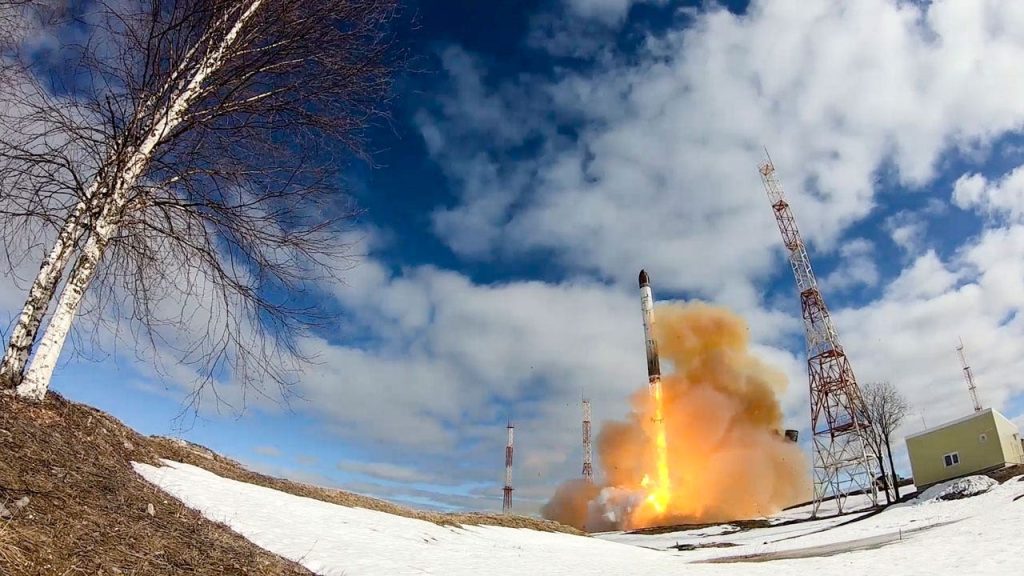Russia’s Defense Ministry announced that they would be holding drills involving tactical nuclear weapons for the first time ever. Unlike nuclear-tipped intercontinental ballistic missiles that can devastate entire cities, tactical nuclear weapons are less powerful and are used against troops on the battlefield, with yields as small as 1 kiloton. These weapons could be carried discreetly on trucks or planes and have not been limited by any arms control agreements between Moscow and Washington. Specifics related to Russia’s tactical nuclear weapons remain undisclosed.
In his efforts to deter Western nations from aiding Ukraine, Russian President Vladimir Putin has repeatedly mentioned Moscow’s nuclear capabilities since the invasion of Ukraine began on February 24, 2022. While initially making strong statements about Russia’s willingness to use nuclear weapons, Putin has since toned down his rhetoric as the conflict progressed. Moscow’s defense doctrine allows for a nuclear response to threats to Russian statehood, with some experts urging Putin to sharpen the vague language to compel the West to take the warnings more seriously. However, Putin has stated that no situation could threaten the existence of the Russian state to justify any nuclear action.
In a move last year, Russia deployed some of its tactical nuclear weapons to Belarus, a country neighboring Ukraine and NATO members Poland, Latvia, and Lithuania. Belarusian President Alexander Lukashenko had long advocated for the presence of nuclear weapons in his country, citing perceived Western threats. The deployment was linked to the UK’s decision to provide Ukraine with armor-piercing shells containing depleted uranium, with both Putin and Lukashenko claiming it was a response to counter such threats. The exact number of weapons moved to Belarus remains unknown, but Soviet-era facilities were prepared to house them under Russian control.
The decision to station tactical nuclear weapons in Belarus, which shares a border with Ukraine, enhances Russia’s ability to target potential threats more easily and rapidly. This move also extends Russia’s capability to strike NATO allies in Eastern and Central Europe if necessary. The weapons remain under Russian military control, and Belarusian pilots and missile crews have been trained to operate them. Putin and Lukashenko have emphasized the defensive nature of this deployment in response to perceived Western aggressions. As tensions continue to escalate in the region, the presence of tactical nuclear weapons in Belarus adds another layer of complexity to an already volatile situation.


